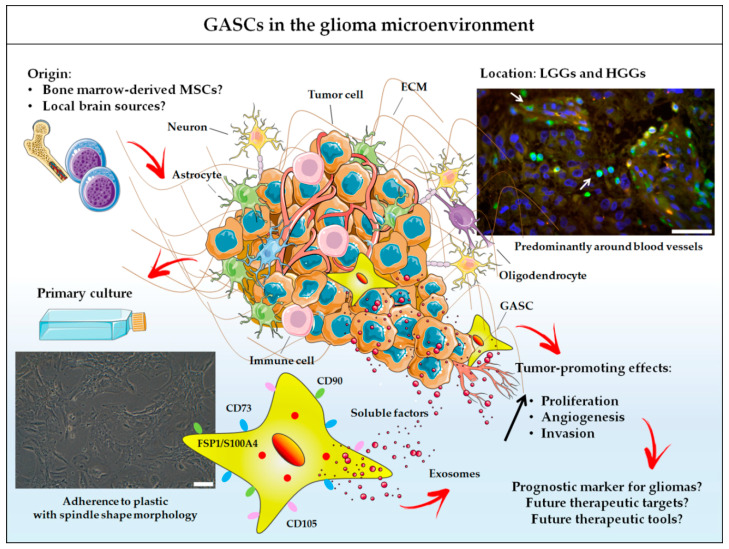Figure 1.
GASCs in the glioma microenvironment. GASCs can now be considered an integral component of the microenvironment of human LGGs and HGGs, alongside blood vessels, immune cells and neuroglial cells. They may be recruited from local brain sources or from the bone marrow, and are mostly found around blood vessels: arrows indicate S100A4+ cells in a GB region; scale bar = 50 μm. Cultured GASCs have properties similar to those of MSCs, such as adherence to plastic (scale bar = 100 µm), expression of surface antigens characteristic of MSCs (CD73, CD90, CD105), mesenchymal differentiation potential and a lack of tumorigenesis potential. They also have phenotypic and functional properties in common with the CAFs described in the stroma of carcinomas. In particular, GASCs express markers associated with CAFs, including FSP1/S100A4, and have tumor-promoting effects mediated by the secretion of soluble factors and exosomes. These cells are of potential interest for prognostic and therapeutic applications.

